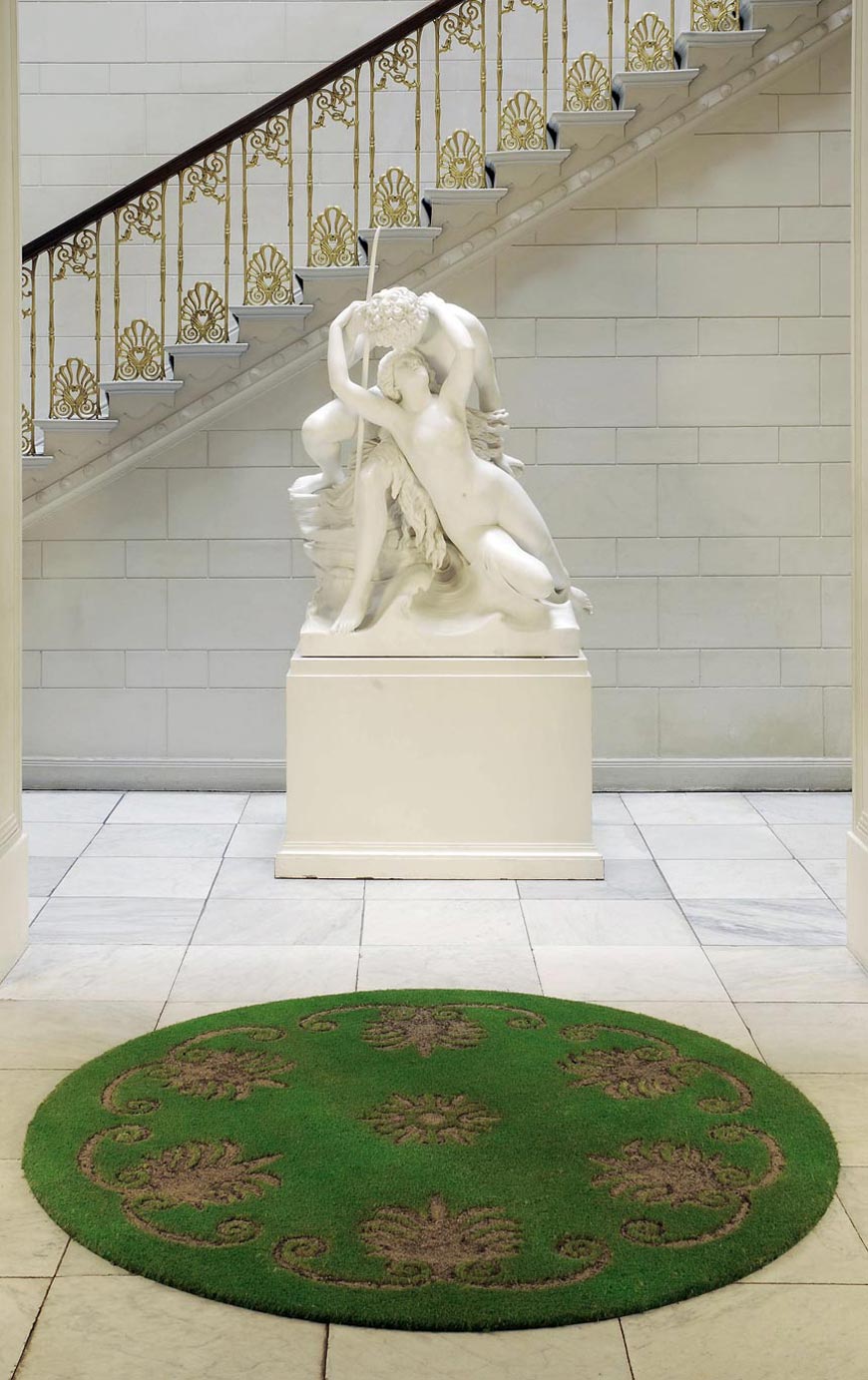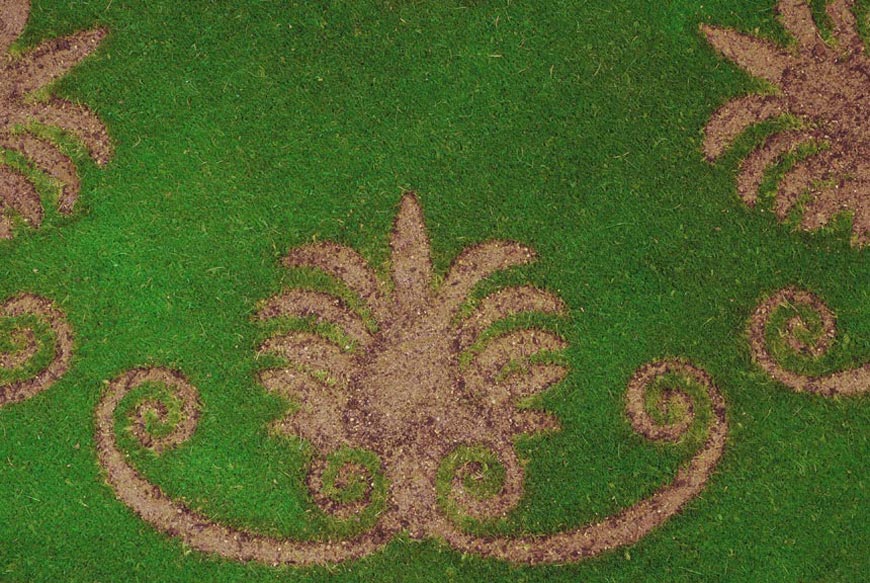Ornamented Farm - 2008
Dyed coconut matting, soil. Diameter: 190 cm
Contribution to ‘Zimmer mit Ausblick’ exhibition, Jenisch House, Hamburg
In the vestibule lies a rug made of coconut matting, a material often used for doormats. The ornaments on the rug, which quote motifs from the Jenisch House, are cut out and filled in with soil. The work refers to the park’s history as a former “Ornamented Farm”. This term was used in the 18th century for a garden concept which sought to combine agricultural and aesthetic qualities. Cultivated fields were part of the park landscape, farmers at work supplemented and completed the overall picture. This idea, which dates back to classical antiquity, was widespread in England in the 18th century, constituting an important phase in the development of the landscape garden. As a “natural landscape”, the landscape garden represented the spirit of the Enlightenment, becoming the counterpart to Classicist architecture. Baron Casper Voght had created such a model estate in Klein-Flottbek, of which today’s Jenisch Park is just one section, the former Süder Park, which featured a tree nursery and various agricultural plots, as well as routes for walking, resting places, and small pavilions. After the baron sold the estate to the banker and senator Martin Jenisch in 1828, the former “ornamented farm” was used solely as a park landscape with no agricultural dimension. In the transition zone between park and house, the doormat-turned-rug connects the idea of an ornamented farm with the ornamentation of the house itself.

































































































